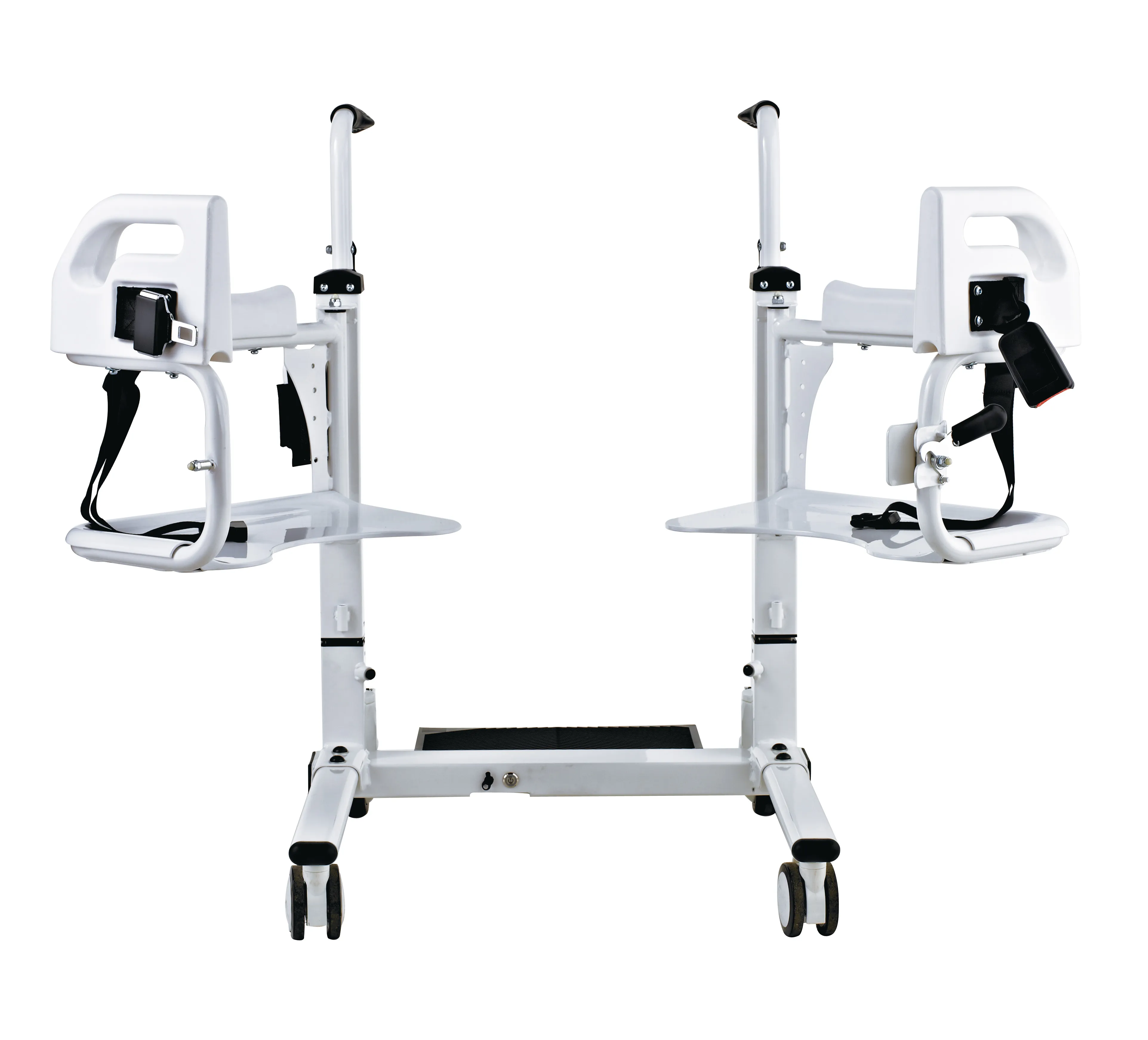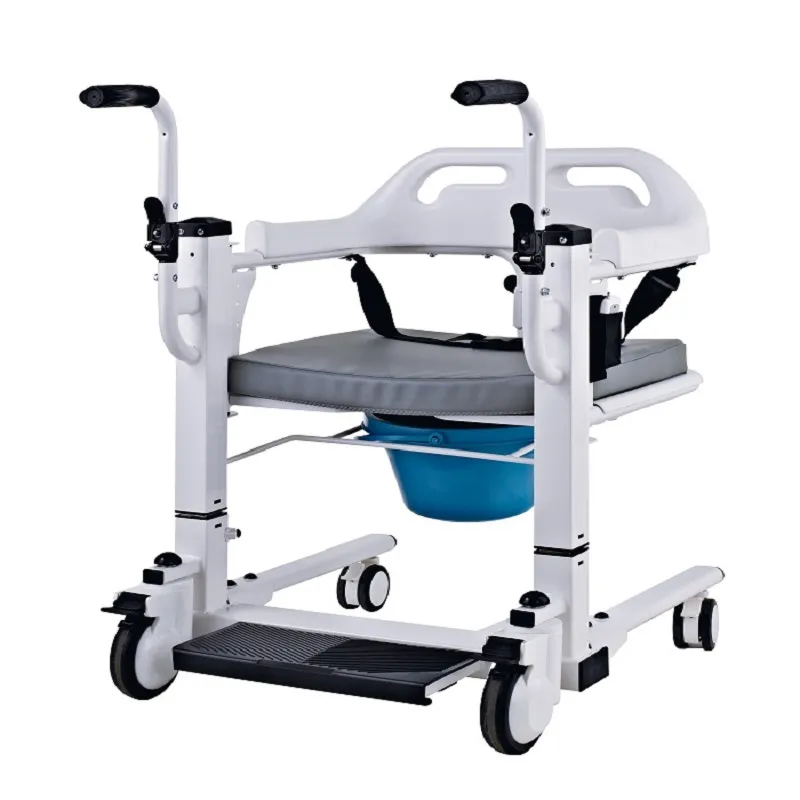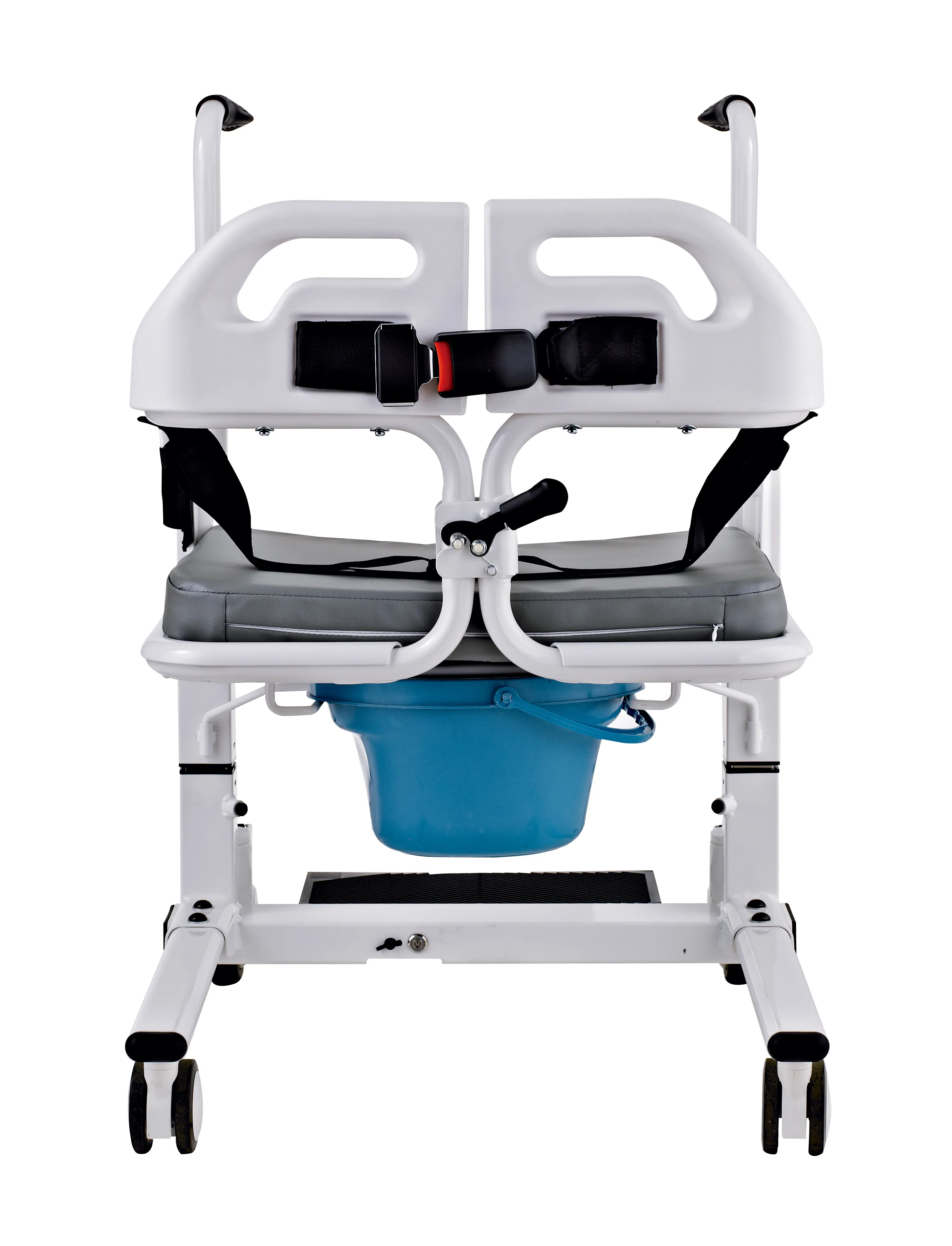In hospitals, nursing homes, rehabilitation centers, and home care settings, there's a device that, while not as high-tech as ventilators or monitors, plays an irreplaceable role in daily patient care: the "patient transfer chair."
Many people are familiar with the term "patient transfer chair," but they often confuse it with "wheelchair," "hospital bed," and "stretcher." In reality, the "patient transfer chair" exists to meet a very specific yet frequent nursing need: safe, efficient, and short-distance movement of patients without recumbent patients.
So, what are the specific uses of a patient transfer chair? How does it function in diverse nursing scenarios? This article will provide an in-depth analysis of the "patient transfer chair," focusing on its practical functions, applicable populations, classifications, usage methods, and the value it provides.

What is a patient transfer chair?
A "patient transfer chair" is an assistive mobility device designed specifically for individuals with limited mobility or temporary disabilities. Its core function is to facilitate transfers between sitting positions. Patient transfer chairs are commonly used in hospitals and home care to transfer patients from their beds to bathrooms, examination rooms, operating rooms, recovery areas, and more.
Compared to ordinary wheelchairs, patient transfer chairs have the following key features:
· They are typically foldable, liftable, or retractable;
· They are compact, making them suitable for navigating narrow spaces such as wards, bathrooms, and elevators;
· They may not be suitable for extended periods of use and are more often used for short-distance travel;
· Most are not self-propelled and require assistance from a caregiver.
Thus, patient transfer chairs are considered temporary, efficient, and function-oriented assistive devices.

What are the uses of a transfer chair?
The core uses of a patient transfer chair include:
1. Transferring between beds and chairs
2. Assisting with toileting or bathing
3. Short-distance movement within the ward
4. Emergency evacuation and transfer
5. Getting in and out of vehicles and for short-distance transportation
1. Transferring between beds and chairs
This is the most basic and common use of a patient transfer chair. For patients recovering from stroke, recovering from fractures, frail patients after surgery, or the elderly, rising from bed can be a difficult task. A transfer chair, with its seat lift, adjustable armrests, and movable base, helps caregivers smoothly transfer patients from bed to chair.
✔ Typical applications: ICU, rehabilitation, and postoperative wards.
2. Toileting or Bathing Assistance
Many patients cannot independently access the bathroom or toilet, especially on slippery floors or in confined spaces. This poses a significant risk. The patient transfer chair's narrow design allows for easy access to the toilet and provides toileting assistance (some models feature an open seat and bedpan).
✔ Typical equipment: A lift-type patient transfer chair with a toilet opening.
✔ Commonly used in nursing homes, home care, and hospice settings.
3. Short-distance transfer within a ward
Within a hospital, patients often need to be moved from their ward to the imaging department, rehabilitation therapy room, or blood draw area. Compared to bulky hospital beds and wheelchairs that take up a lot of space, patient transfer chairs are more flexible, easy to maneuver, and can be transported up and down elevators, making them suitable for nurses to quickly push and pull.
✔ Advantages: Small turning radius, making elevator entry and exit effortless.
✔ Commonly used in wards of secondary and tertiary hospitals.
4. Emergency Evacuation and Transfer
In emergencies such as fires, power outages, and elevator failures, large beds cannot be quickly evacuated via stairs. Portable patient transfer chairs are lightweight and foldable, featuring special anti-slip tires and stair access, allowing medical staff to quickly transport patients out of danger.
✔ Commonly used in emergency rooms, ICUs, and high-rise nursing areas.
5. Car Access and Short-Distance Transportation
Some families or rehabilitation facilities use patient transfer chairs to assist patients in getting in and out of cars, or even as a temporary mobility chair. Due to their lightweight and easily foldable design, some models can easily fit in the trunk, making it convenient for patients to seek medical attention or enjoy fresh air outdoors.
✔ Commonly used for home rehabilitation and postoperative travel arrangements.

What are the different types of patient transfer chairs?
To better understand the uses of a "patient transfer chair," we need to further break down its common types:
Categories | Features | Main Applications |
| Basic transfer chairs | Lightweight construction, four wheels with brakes, removable armrests | In-hospital pushers, bed-chair transfers |
| Lift transfer chairs | Hydraulic/electric lift | Bed docking, bedpan docking, car loading assistance |
| Bathroom transfer chairs | Waterproof and rust-resistant, with a bath stool and drain port | Bathroom access and bathing assistance |
| Folding transfer chairs | Foldable for easy portability | Home care, short trips |
| Stair transfer chairs | Tracked/dual-track design | Transferring patients up and down stairs (emergency) |
| Powered transfer chairs | Rare, with an automatic control system | High-end rehabilitation centers or specialized patient populations |
Who is a patient transfer chair suitable for?
The patient transfer chair is suitable for the following groups:
1. Elderly individuals with mobility impairments
2. Postoperative rehabilitation patients
3. Hemiplegic and paraplegic patients
4. Short-term transfer of inpatients
5. Family caregivers
1. Elderly individuals with mobility impairments
Such as patients with Parkinson's disease, Alzheimer's disease, and osteoporosis, who require frequent transfers between rooms.
2. Postoperative rehabilitation patients
Particularly those in orthopedics, urology, and neurosurgery departments, who cannot stand immediately after surgery.
3. Hemiplegic and paraplegic patients
Such as those with lower limb weakness due to stroke or spinal cord injury, who require a transfer chair for toileting, washing, and other tasks.
4. Short-term transfer of inpatients
Such as chemotherapy patients and those transferred from an infectious disease ward, who require quick transfer by medical staff.
5. Family Caregivers
For families with limited space and frequent stairs, a transfer chair can effectively reduce caregiving risks and labor intensity.
Comparison of the Patient Transfer Chair with Wheelchairs/Stretchers/Hospital Beds
Project | Patient transfer chair | Manual wheelchair | Medical Stretcher | Medical Bed |
Main Purpose | Short distance transfer while seated | Self-propelled/propelled for extended periods | Prone Position Transport | Long-Term Decubitus Care |
| Mobility | Very strong | Moderate | General | Poor (Needs a Wheelchair) |
| Self-Propelled | No | Can be propelled (self-propelled) | No | No |
| Accessible Spaces | Confined spaces, restrooms | Average | General | Limited |
| Flexibility | High | Medium | Low | Low |
| Target Audience | Weak but able to sit | Needs mobility assistance | Critically Irregular Patients | Inpatient |
Summary: The patient transfer chair fills the "nursing gap between wheelchairs and stretchers" and is used for patients who require sitting mobility but have not yet regained the ability to walk.

Practical Feedback from Healthcare Professionals and Patients
In interviews with nursing staff from multiple hospitals and nursing homes, we identified the following core evaluations of the patient transfer chair:
🗣 "Without a transfer chair, bathing and toileting for ICU patients would be a major challenge." — Director of Nursing
🗣 "The wheelchair is too large to maneuver through our ward hallways. The transfer chair is just right." — Head Nurse at a tertiary hospital
🗣 "After my mother had a stroke, we used a transfer chair to push her to the bathroom every day, which really saved her a lot of effort." — Family Feedback
These real-life user experiences once again confirm the indispensability of the patient transfer chair in practical nursing operations.
Precautions for Using a Patient Transfer Chair
Although this article doesn't focus on precautions, for safety reasons, we've listed some brief tips:
1. Always engage the brakes before getting on or off the chair;
2. Avoid using on slopes or slippery surfaces;
3. Regularly check the wheels, armrests, and brakes for looseness;
4. Select a model with an appropriate seat width and load capacity based on the patient's height;
5. Caregivers should prevent tilting and shifting the center of gravity when operating the chair;
What is the purpose of a patient transfer chair?
——This is a question that is both practical and crucial to nursing efficiency.
As described in this article, a patient transfer chair is more than just a "rollable chair." It fulfills a crucial role in countless homes, hospitals, and rehabilitation centers—performing the most frequent and critical transfers of patients during their most vulnerable phases.
It allows patients to maintain a respectful sitting posture, improves mobility safety, and reduces the stress of care. It is an indispensable "micro-transportation hub" in the modern care system.
In the future development of nursing systems, we have reason to believe that every patient transfer chair embodies respect for life and the nursing profession.
Why should buyers trust Dayang Medical products?
Dayang Medical always puts quality first, strictly following the 100-1=0 principle in our production. With advanced manufacturing bases and strong R&D capabilities, our company has developed multiple patented technologies to ensure high-quality and reliable medical devices.
All products, including electric wheelchairs and hospital beds, are certified by CE, FDA, and TUV. Buyers benefit from our affordable prices, professional after-sales service, and wholesale supply options.










